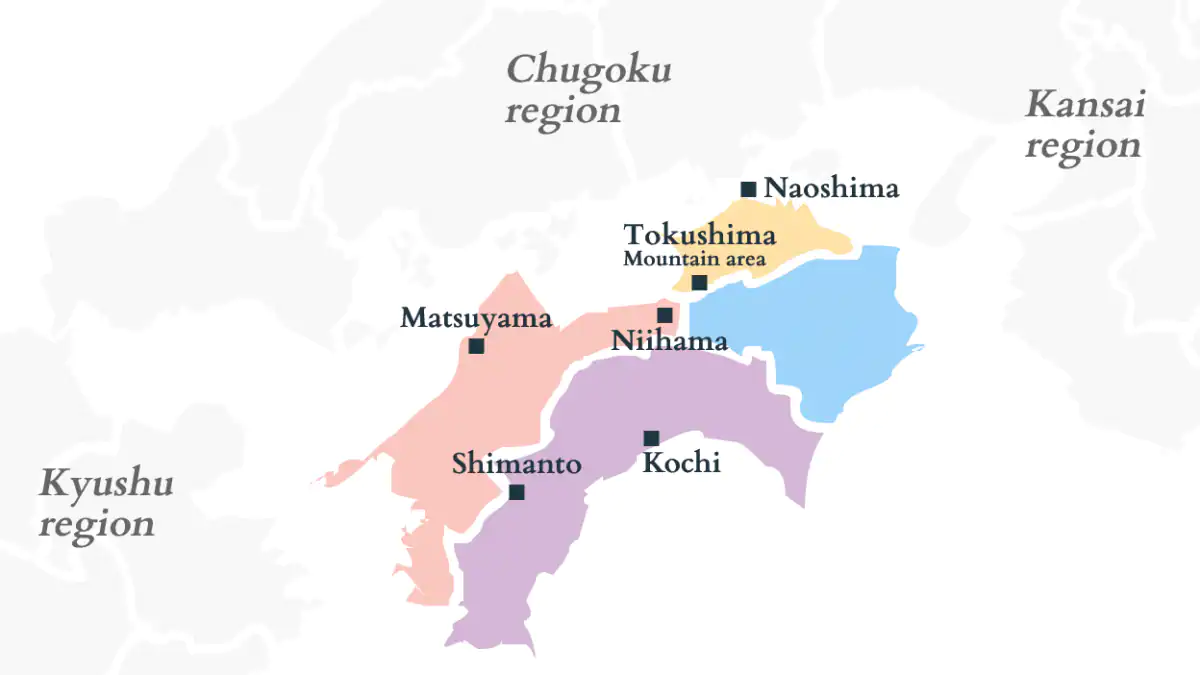It’s important to know the general geography of Japan if you have an interest in the country or culture. This guide to the four main islands will help you better understand the layout of Japan in its broadest terms.
Japan is often referred to as a single entity, and for the vast majority of cases this is appropriate, but if we want to understand Japan well, we have to understand the geographical realities of Japan. The Japanese Islands are diverse and span the distance from central Mexico to Canada with a range of climates that range from subarctic to subtropical

Today Japan is comprised of Four Primary Islands and a myriad of other islands (about 6,852 depending on who you ask, as there are several disputed islands).
Japan stretches from the cold mountains of Hokkaido in the North to the tropical mountains of Okinawa in the south. So when we talk about Japan, events happening in Japan, or aspects of Japanese cultures, it's essential to know where in Japan, because the location is important.
Historically all of the areas today that are governed by the Japanese government were not always Japan just as not all areas that were once governed by Japan are still Japanese territories.
There are many areas that have been Japan (temporarily) that are no longer considered Japan: great examples are Korea, the Philipines, Manchuria, and Guam. Even Hokkaido has been a historically disputed island and was not officially made a prefecture until after WWII.
THE MAIN JAPANESE ISLANDS
Hokkaido
Honshu
Kyushu
Shikoku
The Japanese islands, generally are heavily forested and mountainous, with densely populated urban areas along the coasts and in the valleys. When thinking about the topography of Japan its best to do in so these terms:
HOKKAIDO
The Northern Sea Way 。北海道
This island looks similar to a stingray with the majority of the population living in the southern tail.
Hokkaido is a cold mountainous island with a non-Japanese native population known as the Ainu (although they have historically also been known as the Emeshi) - It is very similar to Alaska in many respects. The name is also very similar to Norway in that they both refer to Northern Trade Routes.
3日住めば道産子 (どさんこ)」= “After living there for 3 days, you are a Hokkaido local”.
HONSHU
The Main Land 。本州・本土
As its name alludes to, this is the real meat and potatoes of the islands. This is where basically everyone lives. Over 80% of the population of Japan lives on this very long Banana shaped island. Because the majority of the population lives here there is no sweeping generalization that covers the entire island. The island can be culturally divided between East and West. The East centered around Tokyo (Kanto) and the West centered around Osaka (Kansai). Historically these two cities have flavored the center regions of Honshu. Tokyo being similar to New York and Osaka more akin to California.
KYUSHU
The Nine Provinces。九州
Kyushu is named for the Nine Provinces that have historically been on the Heart Shaped island. This island to the south end of Honshu is the warmest of the main islands and parts of it are subtropical. Historically it's noted for being a particularly militant region stretching back to the founding of Japan. I like to think of it kind of like the wales of Japan. Mountainous, Rebellious, Militant and more conservative than the other islands.
SHIKOKU
Four Countries。四国
This is the smallest of the four main islands and rests along the southwest shore of Honshu. Shikoku is named for the four provinces that it has historically been divided into and today is comprised of four prefectures. The Island is shaped somewhat like a Serow fluffy wild goat (as seen above) and is the home island of Kukai (Kobo Daishi- the founder of Shingon Buddhism in Japan)
Video
Japan is a small country but there is great diversity throughout the islands. Understanding Japan’s geography helps to better understand the topographic reality of Japan and the social and cultural development of this Archipelago nation.
JAPAN'S MAIN ISLANDS




























Comments